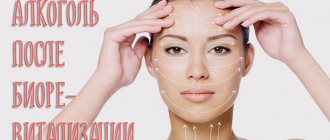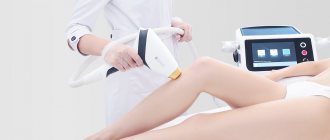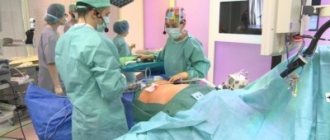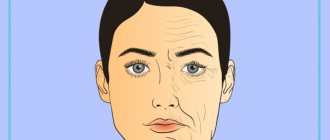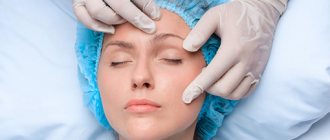Types and features of seams
Depending on the wound, the patient may receive one of two types of sutures - each with its own advantages and disadvantages:
- Submersible . If they were applied to you, then you do not need to worry about removing them. They consist of natural materials that gradually dissolve in the patient’s tissues naturally, without causing rejection by the body. Their disadvantage is their low strength, therefore, when wearing such seams, you need to be careful, avoiding sudden movements and excessive loads. These sutures can consist, for example, of small sheep intestines (catgut). Their resorption is a completely natural process without consequences for humans, caused by hydrolysis and tissue enzymes;
- Removable . They do not dissolve on their own, but must be removed after the wound has healed. Such seams have the advantage of strength, which significantly exceeds the strength of submersible ones. Accordingly, with removable threads, the patient can lead a more active lifestyle. They are made from both natural materials like silk and synthetic ones - nylon, nylon and others. There are also metal seams in the form of staples and wires.
Regardless of the type, the sutures must meet certain requirements: not interfere with blood circulation in the tissues of the wound, not lose strength until it heals, and not leave cavities in it.
How long does it take to dissolve?
When modern self-absorbable threads are used, everything looks different. After about a month, such material naturally breaks down and is removed from the body in separate parts. A person can spit them out or swallow them. Once in the stomach, the threads do not cause any harm to health. But even in this case, you should see a dentist so that he can monitor the condition of the soft tissues, check for complications, and evaluate whether the sutures need to be removed.
There is no exact time determining how many days it will take for the threads to dissolve. This depends on many factors - the quality of the material used, the condition of the wound, the individual characteristics of the body, etc. But the obvious advantage of such sutures is that they do not need to be removed manually and endure an unpleasant procedure. Vicryl threads have the shortest absorption time.
On what day after surgery are sutures removed?
There are many factors that determine when exactly after surgery the sutures are removed. The only thing that can be said unequivocally about this is after the edges of the wound have fused, and this depends on how serious it is, where it is located and what the characteristics of the patient’s body are. The longest recovery time is required for older people and those whose bodies are weakened by illness.
Factors influencing the timing of suture removal:
- general condition of the body;
- the occurrence of complications after surgery;
- ability of tissues to regenerate;
- nature of the operation;
- area of operation;
- depth of cut;
- suture material;
- the presence of conditions that complicate the recovery of the body (illnesses not related to the operation, but affecting the general condition of the patient);
- the occurrence of infection (if the incision becomes infected, the threads will be removed so that the wound is open).
It is impossible to give a definite answer to the question of how many days after surgery the sutures are removed. In each individual case, the timing is individual. In order to clarify them, you need to talk to your doctor and soberly assess the condition of your body. We can only talk about approximate withdrawal periods taken from statistics and medical literature:
- for surgery on the face or neck - removed after 4-5 days;
- on the head - after 6 days;
- in the chest areas - after 10-14 days;
- from the operated foot or lower leg - after 10-12 days;
- for local operations of the abdominal region - after 6-8 days;
- after amputations, they are removed after 12 days.
On average, if we take statistics into account, stitches are most often removed after 6-9 days .
This process itself is carried out by pulling the thread knot upward until the thread hidden in the tissue appears above the skin and is cut. For long wounds, the first half of the sutures is removed first, and after a few days the second half is removed.
Postoperative recovery stage
If the operation was successful and there are no prerequisites for the development of complications, then the patient is allowed to get out of bed and eat on the second day. For suturing, threads from various materials are used. Most often, ordinary threads are used, which need to be removed after a while. On what day should sutures be removed after laparoscopy? This is a very important question, since regular threads should be removed at a certain period after the operation. The sutures must be removed on the fifth day, for which the woman must come to the hospital where this procedure will be performed. Removing sutures on the fifth day is a standard approach, which is not always suitable in practice.
When to remove the sutures is decided by the doctor who performed the operation. After all, the period of suture removal is influenced by such an indicator as the speed of wound healing. If wounds heal too slowly, the period may increase to 2-3 weeks. Throughout the healing period, wounds need to be properly cared for.
Depending on what suture material the doctor used, it is necessary to carry out proper care of the wounds. If self-absorbable threads were used, there is no need to remove them, as they will dissolve on their own. Regular threads must be removed, otherwise they will fuse with the skin, which can subsequently provoke the development of pathologies. To prevent harmful bacteria from appearing on the seams, it is imperative to care for wounds with the help of special medications: brilliant green, peroxide, iodine, bandage.
Removing stitches yourself at home
The best solution for removing threads from a wound is to go to the doctor, but there are rare situations in which this is difficult. If you are careful and have some knowledge, you can remove the threads yourself, but if they have grown into the tissue, forget about it and consult a doctor. The danger of removing stitches at home lies in the fact that you can introduce an infection into the healing wound. But if you decide, then prepare everything you need:
- tweezers;
- sharp scissors;
- gauze napkin with adhesive tape and bandages;
- iodine and hydrogen peroxide;
- a saucepan with boiling water and medical alcohol.
First, be sure to sterilize all metal instruments that may come into contact with the healing wound - this requires boiling water and alcohol. After rinsing the tweezers and scissors in boiling water and treating them with alcohol, lightly pour iodine onto the operated area. Next, you need to carefully grab the knot of thread with tweezers and smoothly pull it up. A fragment of thread should appear from the channel.
If nothing works, the thread may have grown in, and in this case you should not continue to remove it yourself. Provided that the thread still stretches, cut it with scissors so that there is no knot left. Then, using tweezers, grab the thread from the edge of the seam opposite the edge of the cut thread and gently pull. Important: the thread passing through the fabric must be clean, otherwise all independent manipulations must be abandoned immediately.
After removing the thread from the wound, treat it again, preferably with hydrogen peroxide. After this, use a plaster and a sterile bandage - tightly, but without excessively squeezing, cover the area from which the stitches were removed.
Practicing such home medicine is at your own peril and risk. By doing this, you expose yourself to the danger of infecting the wound, and therefore it is better to entrust the removal of sutures to a specialist, based on the described time frame and the prescriptions of your doctor.
Removing sutures from a wound is the removal of a special material to connect biological tissues, which is used to stop bleeding and heal skin damage. The procedure is carried out on average for 5–9 days. You can remove suture threads yourself if you know the rules and follow the doctor’s instructions.
Why is it used?
In dentistry, third molar removal is a serious procedure and is often compared to surgery, although it is performed in the dentist's chair. Since this tooth is quite wide, has deep roots, and sometimes additional incisions are made in the gum to extract it, you need to use a suitable material to close the wound.
With this procedure, complications are possible in the form of ligament rupture, soft tissue divergence, damage to the bone structure, nerves, blood vessels, etc. Therefore, after the removal of a wisdom tooth, the patient will experience some discomfort. In the first days, sometimes there is blood, the gums swell, become red or blue, there is pain, and the temperature rises slightly. On the third day it becomes easier if no pathological process has occurred.
By applying sutures to the wound, tissue infection is prevented. The risks of complications are reduced by 90%, which has been proven by many years of experience. In dentistry, wound suturing has the following purpose:
- preventing the displacement of the formed blood clot, which blocks access for bacteria to the deep layers of tissue;
- protecting the hole from food debris getting there;
- helps the edges of the gums to grow together;
- accelerates the healing process;
- prevents infection from entering the wound;
- eliminates excessive bleeding.
In surgical and dental practice, two types of threads are used - conventional medical and special self-absorbable. Due to convenience and fewer difficulties, in recent years doctors have increasingly begun to resort to the second type of sutures. The fact is that when suturing a wound with simple threads, they need to be removed after a week. This is additional trauma to the body and a rather unpleasant procedure for the patient.
Therefore, self-absorbing sutures are more justified. Among them are:
- Catgut stays on the wound for up to two weeks, after which it is broken down under the action of enzymes. The particles are eliminated from the body naturally without any consequences. It should be taken into account that these threads contain substances such as foreign proteins, which in some patients cause inflammatory reactions in the body. Therefore, they are rarely chosen for complex dental procedures.
- Vicryl and Dexon are two similar types of synthetic material. It turns out to be hypoallergenic, does not cause inflammatory processes on the wound and is able to last as long as the gums heal. These threads are more often used by dentists for suturing wounds after wisdom tooth removal, since this particular procedure is associated with a high risk of complications, and the edges take longer to heal than usual. This material is non-absorbable for 140 days, after which it is easily broken down due to hydrolysis.
When to remove stitches from a wound
Surgical intervention is indicated when the integrity of the skin and underlying tissues is compromised. Damage is caused by cuts, deep incised wounds, and punctures. To connect the excision site, suturing is carried out, and the edges of the injured area are tightened using staples or special threads. Sutures to be removed can be of three types:
- primary – after surgical intervention on the boundaries of the dissected injury;
- secondary - on a granulating scar when the edges of the wound diverge;
- provisional - applied temporarily, during the operation, at the next stage - removed.
In medicine, there are times for removing sutures, depending on the location of the wound:
- General – 6–9 days.
- On the head and neck – 6–7 days.
- Caesarean section – 7–10.
- Sutures on the perineum - on the 5th day.
- Chest, feet, legs – 10–15 days.
- Mole removal – 7–10.
Additional questions
They sewed up a hole after the removal of a wisdom tooth, they said that the stitches do not need to be removed
This is a normal phenomenon, since more and more often in dental practice special self-absorbable threads are used, which do not require additional manipulations on the part of the doctor or patient. They are quite convenient and completely safe for the body. There is really no need to remove or remove such stitches. After a month or even earlier, the material gradually breaks down into separate parts and is eliminated from the body without causing any difficulties.
Is it possible to remove stitches yourself?
Removal of surgical threads is carried out regardless of the location of the sutured skin lesion. If possible, it is better to consult a doctor. You can remove the stitches from the wound yourself at home, if they are small and the scar is in normal condition. To carry out the manipulation, you need to be well prepared, arm yourself with tools that can be found in the pharmacy:
- surgical or nail scissors;
- tweezers;
- utensils for sterilizing instruments (saucepan);
- antiseptic for wounds (hydrogen peroxide, alcohol, iodine);
- bandage;
- cotton wool;
- sterile rubber gloves;
- patch.
Sutures after abdominal operations cannot be removed independently. Removal should be carried out by a doctor who is able to adequately assess the condition of the scar and, if necessary, leave some stitches for a few more days. In some cases, the surgical nurse may remove post-operative sutures. You should not remove the connecting material yourself, regardless of the size of the wound, if:
- diagnosed with diabetes;
- the scar is located on the head;
- the incision is sutured with surgical staples;
- the wound is in a hard-to-reach place.
There is suture material that does not require removal. Internal sutures are applied to organs and vessels during abdominal operations.
Return to normal life
You can return to normal activities after some time, when the wounds have healed. Sexual activity can be carried out one month after the operation after the first menstruation. After laparoscopy, the likelihood of becoming pregnant increases, so it is important to use contraception during sexual intercourse.
It is important to know! The postoperative period of laparoscopic intervention is the best time to conceive a baby.
On the third day, if there are no contraindications, the doctor discharges the patient. In this case, the woman needs to visit the hospital every day so that the doctor can monitor the wound healing process. You can engage in heavy physical labor no earlier than after 1-2 months, which depends on the speed of wound healing. You should consult a doctor if the following ailments develop:
- increased body temperature;
- the appearance of vomiting and nausea;
- deterioration of health;
- increased heart rate.
Complications after laparoscopy occur in rare cases, which may be due to improper wound care. Considering the fact that the operation is the most gentle, but no less effective than the traditional method, it requires careful preparation of the patient, both the day before and at the end of the process.
A well-sutured wound is the key to its good healing. After any operation, the wound is closed with sutures. For this purpose, special medical suture material is used. Each layer of the wound is stitched with a separate row of stitches. The operation is completed by suturing the skin. As a rule, this is done using threads. After the wound has healed, the skin sutures must be removed.
The time frame for removing sutures varies from several days to 2-3 weeks. This depends on several factors:
- Localization of the wound.
When the wound is located on the abdomen (for example,
after a cesarean section or appendicitis
), the time period is 5-8 days,
on the hand and fingers
10-12 days, when localized
in the joint area
- up to 2 weeks. - Condition of skin and tissues.
If the edges of the wound are severely injured and poorly adapted to each other, there is no need to rush to remove the sutures, the time frame is 2 weeks. - Depth of the wound.
If the wound is superficial, the time frame is shorter. - Method of wound suturing.
Some surgeons use an intradermal suture, which does not require removal at all.
Withdrawal algorithm
Stitches are removed from a sutured wound in medical institutions as follows:
- Remove the bandage.
- The edges of the injured area are assessed, the stitched area is examined, and the stitches are counted.
- Iodopirone or 70% alcohol treats the skin near the scar.
- A secondary narrow treatment of the tissue contraction site itself is performed.
- Each stitch is cut one by one, and the suture is removed from the wound by pulling with tweezers.
- Depending on the doctor's decision, not all stitches can be removed.
- Having finished removing the threads, the wound area is treated with an antiseptic.
- A sterile napkin is applied on top, secured with a bandage, or a bandage is applied.
- After removing the sutures, the surgeon gives recommendations on how to care for damaged skin surfaces.
You can remove suture material from a small wound at home; the algorithm of actions will differ. Initially, you need to prepare everything you need to remove the threads.
- Organize a workspace for tools that will be useful when removing sutures. Remove all foreign objects from it, wipe off the dust, and treat the surface with alcohol. On a sterile napkin (tray), place a bandage, cotton wool, plaster, antiseptic (iodine, medical alcohol). The operation site should be well lit.
- Boil a pan of water. Dip metal tools (scissors, tweezers) into water. Boil for 3-5 minutes. Place on a clean, dry towel over the area where surgery will be performed. After the instruments have dried, they must be wiped with alcohol.
- Wash your hands with soap and dry. Wear sterile rubber gloves. Carefully remove the bandage (plaster) from the surface of the wound.
- Before removal, inspect the scar surface for redness and inflammation. Treat the damaged area and the skin around the periphery of the seam.
- Using tweezers, carefully pick up the stitch knot and lift it 2–3 mm. Place the jaw of the scissors under the thread and cut the suture material on the side of the knot.
- Gently pull the thread at the knot so that the cut part opposite the knot is pulled through the skin. Carry out such manipulations with each stitch. Sharp pain during suture removal may indicate incorrect action. Unpleasant sensations and discomfort when pulling the threads are considered acceptable.
- Treat the wound with an antiseptic. Apply a sterile bandage over it. If there are special doctor's recommendations, they must be followed.
After removing the surgical suture, you must follow the rules for caring for the postoperative wound:
- Perform dressings twice a day (morning/evening).
- Protect from injuries and unnecessary tension - at first it can lead to divergence of the edges.
Possible complications after suture removal
The formation of a scar on the skin occurs over 5–9 days. Sometimes during the healing process after removal of suture materials there is a risk of complications developing:
- Blood appears - usually blood discharge from the wound is observed if the sutures are removed ahead of time. The main task is to adhere to hygiene to eliminate the risk of infection. Twice a day it is necessary to wash the area with an antiseptic and apply dressings.
- If the wound opened after removing the sutures, the suture material was removed from the unhealed lesion. Tissue separation may be on the surface or within the affected area. In such cases, you need to see a doctor to re-tension the tissues.
- Suppuration (wetting damage to the skin). The cause of the appearance of pus may be a lack of hygiene, scar care, or an infection was introduced when removing the suture material. The inflammatory process develops on the wound; the patient may notice a deterioration in health, fever, and general weakness. The treatment of suppuration in the postoperative suture should be carried out by a doctor. In addition to local therapy, you need to take antibiotics.
- Formation of a large scar. Cosmetic plastic surgery for excision of scar tissue is indicated. The procedure involves the use of a laser.
Alternative" methods
Modern surgery is constantly progressing, but with the advent of new technologies, hand sutures continue to enjoy the same popularity. One of the new technologies is the application of titanium staples (skin staplers). Such a stapler is applied and removed using a special device - an endoscopic stapler.
Another type is staples that dissolve some time after surgery.
Despite simplifying the wound healing process, this method has 2 main disadvantages:
- High price for equipment and the implementation itself.
Lack of participation of the surgeon himself. Hand sutures and direct involvement of the fingers of an experienced surgeon are more reliable and safe. A competent specialist feels the wound, selects the thickness of the suture and the proportions of the nodes.

